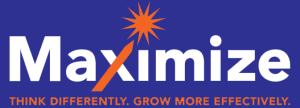I had the pleasure of attending OpenText’s Purpose-Driven Speakers Series event yesterday morning in DC at the Willard. Michael Edson, Director of Web and New Media Strategy at the Smithsonian Institution, was the terrific presenter. Not only was he funny, relevant, quick and fresh, his presentation was grounded in decades of management theory and technology history. […]
Using Search as a Strategic Advantage for Government Websites
The Obama Administration’s recently announced Campaign to Cut Waste’s Web Reform initiative has prompted quite a bit of discussion about how agencies can most efficiently and effectively reduce government websites by almost 2,000. In his post “It’s Not Just Domains and Data – Content, Analytics Key for Fed Web Reform,” Mike Rupert, discusses the importance of using […]
Training to operate effectively in a new field of maneuver
It’s clear from the Department of Defense’s 2006 Quadrennial Defense Review, the Directive-Type Memorandum 09-026 about Internet-based Capabilities (IbCs) and the stand-up of CYBERCOM that DoD is committed to the Internet and IbCs. To successfully navigate this field of maneuver, it’s critical that DoD appropriately train and equip its workforce, on both the responsible (defensive) […]
Defining the Scope of OpenGov at DoD
The Open Government Directive (OGD), encourages agencies to be more transparent, participatory and collaborative, internally, cross-agency and externally. It requires agencies to have an “open stance” rather than a closed stance regarding information sharing: “share it unless you can’t” rather than “don’t share it unless someone requests it.” This approach is similar to our judiciary […]
If it’s not about the tools and technologies, why is there so much push-back?
So, in the Government 2.0 discourse, we’re constantly saying that “it’s not about the tools and technologies.” Rather, it’s about a shift in the way we do business — a shift to collaboration. So why is it so tough to get organizations to adopt collaborative tools, mindsets and practices? Why are so many organizations pushing back on using […]
So, is that the end of the conversation?
I’ve been reading blogs and articles this morning about Squidoo and BzzAgent’s Brands in Public project that launched (and flopped?) back in late September 2009. Brands in Public aggregates the conversation about a brand that’s going on in real-time across the social web. It pulls feeds from Twitter, photos from Flickr, blog posts and articles into […]
Going Dutch
This past Tuesday, Mark Drapeau and I had the honor of meeting with a delegation of new media representatives from the 13 ministries of the government of the Netherlands. I found it fascinating that the 13 Dutch ministries are so coordinated in their new media efforts. The group with which we met coordinates efforts and shares information cross-ministries. […]
Catalyzing Congressional Collaboration
This morning a colleague of mine forwarded me Nancy Scola’s Personal Democracy Forum post Are Congressional “New Media” Clubs Missing the Point? In short, Nancy challenges whether Congressional new media caucuses are “simply self-serving clubs dedicated to winning the YouTube-Facebook-Twitter arms race.” (Just perfectly articulated, I think.) If so, she explains, they are missing the point and losing an […]
On C-SPAN Today
This afternoon I was fortunate enough to moderate the Engaging the Public in Conversation panel at the Potomac Forum& GovCollab.org’s Gov 2.0 Leadership, Collaboration and Public Engagement Best Practices Symposium at the Ronald Reagan Building & International Trade Center in DC. All four panelists were really outstanding in both the content of the case studies they […]
Engaging a Community to Solve Its Own Acute Needs
MiXT Media Strategies — in conjunction with iStrategyLabs and MindFarm — is currently working on a client project with a group in Alexandria, VA that is interested in utilizing social media tools and Web 2.0 technologies to more efficiently and effectively solve the acute needs — think: hunger, homelessness, etc. — of its community by increasing the […]
